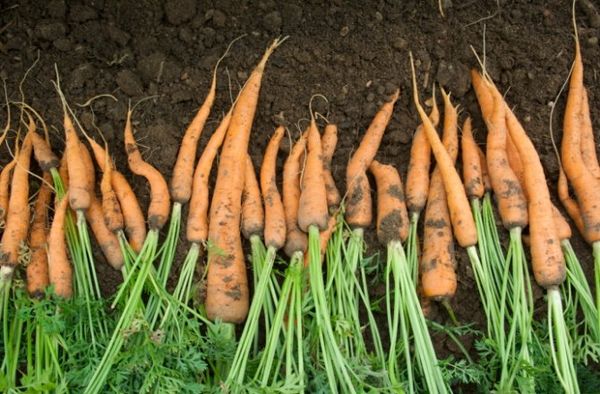
If your skin begins turning orange, you may feel like the star of a sci-fi flick, but there's most likely a more down-to-earth explanation.
Carrots, cantaloupe and other soil-grown foods are chock-full of beta-carotene, and when eaten in abundance they can sometimes cause people to develop an orange skin tone. The orange and red pigments in apricots, mangoes, oranges, pumpkin, squash, sweet potatoes and similar produce create an excessive amount of beta-carotene in the bloodstream, which in turn builds up in the areas of the body with thicker skin — hands, knees, elbows, feet and the folds around the nose — and exhibits a titian hue. The condition is more visible on those who have light skin, but people of any skin color can be affected.
Advertisement
Carotenemia isn't terribly common, even for people who are fruit and vegetable enthusiasts. It's usually the result of a restricted diet that includes large quantities of a specific fruit or vegetable that is high in red, orange and yellow pigment; this pigment also is known as beta-carotene.
Beta-carotene is necessary for the body to produce vitamin A, and while there are no federal dietary guidelines for beta-carotene, it is recommended that adult males intake 900 micrograms (3,000 IU) of vitamin A daily and that adult females intake slightly less: 700 micrograms (2,310 IU).
A large carrot has about 6 milligrams (0.0002 ounces) of beta-carotene. These six milligrams will convert to about 1,000 micrograms of vitamin A, and vitamin A has long been credited with helping the body to ward off heart disease, and promote healthy skin and eye tissue. With about a 12:1 beta-carotene to vitamin A conversion rate, you'd need to eat 120 to 300 carrots per day for several weeks — without dipping into any other food groups — to discover an autumnal apricot aspect to your skin tone.
While orange, yellow and red fruits and veggies are the primary source of carotenosis, it also can be caused by other colors of foods such as cabbage, spinach, kiwi, asparagus and apples. So, if you're looking for a healthy glow (as opposed to a vivid orange), keep eating those fruits and veggies — as long as there is a variety of them.
A study published in the American Journal of Public Health in 2012 reported that eating two extra portions of fruits and vegetables a day for six weeks caused a detectable change in skin tone, in that it produced a healthier glow.
Now, where did I put those carrots?
Advertisement


